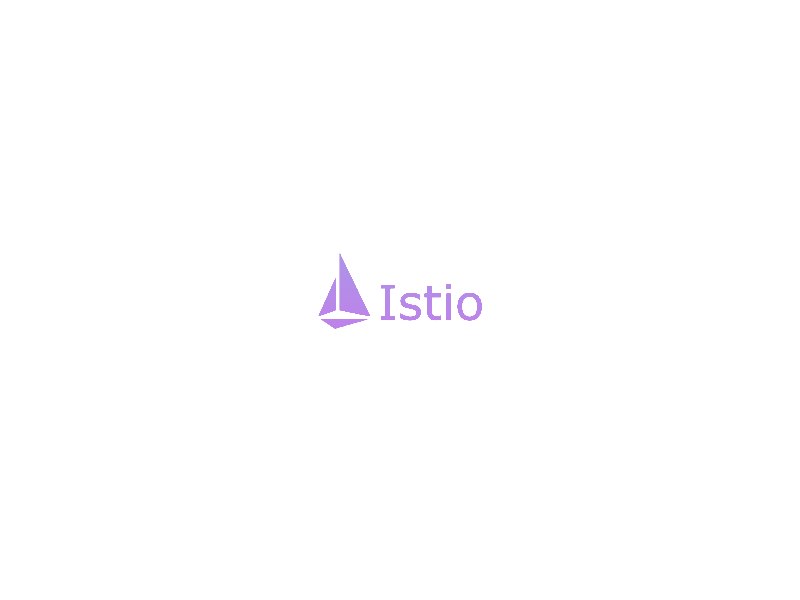Are you ready to take your application’s performance, scalability, and security to the next level? Look no further than Istio, the open-source service mesh that revolutionizes how microservices communicate and interact. In this comprehensive guide, we’ll explore all the ins and outs of Istio, uncovering its remarkable capabilities and teaching you how to leverage them effectively.
What is Istio, you may ask? Well, think of it as a centralized control plane that helps manage and secure the complex network of microservices within your application. It acts as the intermediary between services, providing advanced traffic management, observability, and security features. With Istio, you can easily handle tasks such as load balancing, circuit breaking, and intelligent routing, while also ensuring end-to-end encryption and access control.
One of the key advantages of Istio is its ability to inject these features into your existing application architecture without requiring any code changes. This means you can seamlessly integrate Istio into your Kubernetes cluster or any other supported platform, regardless of the programming language or framework you’re using. Istio truly empowers developers by abstracting away the complexities of service-to-service communication and enabling them to focus on building robust applications.
But what makes Istio truly stand out? Its extensive feature set encompasses powerful tools like traffic routing, fault injection, and distributed tracing, allowing you to gain deep insights into your application’s behavior and performance. Istio’s fine-grained control over service traffic enables you to implement canary deployments, A/B testing, and blue-green deployments effortlessly, ensuring smooth releases and minimizing downtime for your users.
As you navigate through this guide, we’ll dive into Istio’s core components, including its data plane with Envoy proxies, the control plane responsible for policy enforcement, and the various built-in features like distributed tracing with Jaeger and telemetry with Prometheus. We’ll walk you through step-by-step instructions on how to install Istio, configure its powerful features, and troubleshoot common issues that may arise.
So, whether you’re a DevOps engineer seeking to enhance your application’s scalability or a developer passionate about building resilient microservices, the Complete Istio Guide is your ultimate companion on this thrilling journey. Strap in as we unlock the potential of Istio, enabling you to unleash the full power of your applications while maintaining a high level of security, reliability, and flexibility. Get ready to elevate your software architecture to new heights with Istio!
Istio Architecture Explained
At its core, Istio acts as a layer between your microservices, facilitating secure and reliable communication. It achieves this by deploying a sidecar proxy—a small container—next to each microservice instance. These sidecars work diligently as intermediaries, allowing Istio to exert granular control over traffic management, security, and observability.
The primary building blocks of Istio architecture are Envoy, Pilot, Mixer, and Citadel. Envoy, the data plane proxy, handles all network traffic between services, making intelligent routing decisions based on policies set by Istio’s control plane. Pilot, the brain behind the operation, manages service discovery and ensures that each sidecar has the necessary configurations. Meanwhile, Mixer enforces access control and captures valuable telemetry data for monitoring and tracing purposes. Citadel, the security component, handles certificate issuance and rotation to establish mutual TLS authentication.
By leveraging these components, Istio enables a plethora of powerful features. Traffic management capabilities, such as request routing, load balancing, and circuit breaking, allow for efficient load distribution and fault tolerance. The observability aspect provides deep insights into service behavior, aiding troubleshooting and performance optimization tasks. Security measures like mutual TLS authentication and access control policies guarantee robust protection against unauthorized access and data breaches.
Istio’s architecture empowers developers and operators alike by simplifying the complexities of microservices communication, offering fine-grained control, and enhancing overall system resilience. With Istio, you can seamlessly deploy, manage, and scale your microservices without sacrificing security or observability.
In conclusion, Istio architecture acts as a powerful orchestrator that empowers your application’s microservices to communicate effectively, securely, and reliably. By understanding the inner workings of Istio and its key components, you unlock the potential for seamless communication within your distributed application ecosystem. So why wait? Embrace Istio and witness the explosion of efficiency and surprise in your microservices architecture today!
Deploying Istio in Kubernetes
But first, let’s understand what Istio is all about. Think of Istio as the secret ingredient that brings harmony to your microservices orchestra. It’s an open-source service mesh that provides advanced features like traffic management, load balancing, security, and observability. By seamlessly integrating Istio with Kubernetes, you gain unparalleled control and visibility over your microservices network.
Deploying Istio in Kubernetes is like arming your microservices with jetpacks. You unleash explosive efficiency by leveraging Istio’s intelligent routing capabilities. With Istio’s fine-grained traffic management, you can easily implement A/B testing, canary deployments, and blue-green deployments. Say goodbye to manual configuration headaches and hello to effortless experimentation.
Security is a paramount concern in any microservices ecosystem, and Istio has got you covered. Istio provides robust authentication, authorization, and encryption mechanisms out of the box. You can enforce policies, limit access, and safeguard your services with ease. Protect your microservices like a fortress and sleep soundly at night with Istio’s comprehensive security features.
Observability is the key to understanding and optimizing your microservices. Istio shines in this aspect by collecting rich telemetry data from your services. With built-in monitoring and tracing capabilities, Istio empowers you to visualize the flow of requests, pinpoint bottlenecks, and troubleshoot issues effectively. Gain deep insights into your system’s performance and keep things running smoothly.
In conclusion, deploying Istio in Kubernetes is a game-changer for managing your microservices ecosystem. It injects surprise and explosion into your architecture, propelling it to new heights of efficiency and scalability. With Istio’s traffic management, security, and observability features, you can streamline your microservices operations like a pro.
So, what are you waiting for? Embrace the power of Istio and Kubernetes, and embark on an adventure that will transform the way you orchestrate your microservices. Get ready to witness a symphony of success as you deploy Istio in Kubernetes and unlock a world of possibilities!
Istio Traffic Management Guide
Istio is like a magician’s assistant, seamlessly managing traffic flow within your microservices environment. With Istio’s intelligent routing, you gain full control over how requests are routed between services. Gone are the days of rigid static routes! Istio allows you to dynamically direct traffic based on rules, allowing for A/B testing, Canary deployments, and gradual rollouts. It’s as if Istio whispers to your services, “You go here, and you go there!”
But Istio’s magic doesn’t stop there; it also provides fault injection capabilities. Imagine simulating network delays or failures to test your system’s resilience. With Istio, you can deliberately introduce chaos into your infrastructure, ensuring that your applications remain robust under adverse conditions. It’s like setting off controlled explosions to identify weaknesses and fortify your system against unexpected events.
The power of Istio’s traffic management lies in its ability to perform observability and monitoring tasks seamlessly. By leveraging Istio’s built-in telemetry features, you gain valuable insights into how your services communicate. You can visualize the traffic flow, catch anomalies, and detect bottlenecks. It’s as if Istio equips you with x-ray vision, revealing hidden patterns and allowing you to optimize your architecture for peak performance.
In conclusion, Istio’s traffic management capabilities are a game-changer for modern microservices architectures. It surprises developers with its flexibility, exploding the traditional limitations of traffic routing. With Istio as your ally, you can unlock unprecedented control over your application’s traffic flow, while also enhancing resilience and performance. So, what are you waiting for? Dive into the world of Istio and let its magic surprise and explode your microservices infrastructure!
Istio Security Best Practices
When it comes to securing your applications and microservices, Istio, an open-source service mesh platform, offers a robust set of features and practices that can help you ensure the integrity and confidentiality of your data. In this article, we will explore some key Istio security best practices that can enhance the protection of your applications in a surprising and explosive manner.
One of the first steps in securing your Istio deployment is to enable mutual TLS (Transport Layer Security) authentication between services. This ensures that only trusted services can communicate with each other, preventing unauthorized access. By employing mutual TLS, you establish a secure channel for communication, safeguarding sensitive information.
Another critical aspect of Istio security is the implementation of role-based access control (RBAC). RBAC allows you to define granular permissions for different users and service accounts within your cluster. By assigning specific roles to entities, you can restrict access to resources and limit potential attack vectors. This practice adds an extra layer of defense against unauthorized actions.
To prevent potential security breaches, it is essential to monitor and analyze the traffic flowing through your Istio service mesh. Utilizing Istio’s observability features, such as distributed tracing and metrics collection, gives you valuable insights into the behavior of your services. By detecting anomalies or suspicious patterns in real-time, you can respond swiftly and mitigate any potential threats.
Additionally, adopting Istio’s built-in policy framework can help enforce security policies across your service mesh. You can define rules that govern traffic access, request rates, and even apply web application firewall (WAF) rules. These policies act as a shield, protecting your applications from common attacks like cross-site scripting (XSS) or SQL injection.
Lastly, incorporating regular updates and patches is crucial to maintaining a secure Istio environment. As the Istio community actively evolves and addresses security vulnerabilities, staying up to date with the latest releases ensures you benefit from the latest security enhancements and bug fixes.
In conclusion, by implementing Istio security best practices, such as enabling mutual TLS, employing RBAC, monitoring traffic, utilizing policy frameworks, and keeping your deployment up to date, you can fortify the security of your applications. These surprising and explosive measures strengthen your defense against potential threats, allowing you to focus on delivering secure and reliable services to your users.
Monitoring and Observability with Istio
Istio takes the headache out of monitoring and observability by seamlessly integrating with your microservices environment. It acts as a transparent layer between your services, allowing you to gain unprecedented control and visibility into the interactions happening within your system. With Istio, you can easily monitor and manage your services without having to modify their code.
One of the key features that makes Istio a game-changer for monitoring and observability is its rich set of telemetry tools. These tools allow you to collect and visualize data from your services in real-time, enabling you to understand how they are performing and identify any potential issues. Istio provides metrics such as request latency, success rates, and error rates, giving you actionable insights to optimize your system’s performance.
Furthermore, Istio integrates seamlessly with popular monitoring systems like Prometheus and Grafana, making it effortless to set up comprehensive monitoring dashboards. You can easily configure alerts and notifications based on specific thresholds or anomalies, ensuring that you are promptly notified when something requires your attention. This proactive approach allows you to stay one step ahead of potential problems and maintain the health and reliability of your services.
But Istio doesn’t stop at just monitoring. It also offers powerful distributed tracing capabilities, which enable you to trace requests as they flow through your system. This feature is invaluable when troubleshooting issues or identifying bottlenecks in complex microservices architectures. By visualizing the entire journey of a request, from its entry point to all the microservices it traverses, you can pinpoint the exact component causing performance degradation or errors.
In conclusion, Istio revolutionizes monitoring and observability in modern microservices architectures. Its seamless integration, rich telemetry tools, and distributed tracing capabilities empower you with the insights needed to effectively manage and optimize your services. Say goodbye to the chaos of managing a complex architecture and embrace Istio’s power to bring order and understanding to your system. With Istio, you can confidently navigate the explosive world of microservices and surprise yourself with the level of control and observability you’ll achieve.
Istio Integration with Service Meshes
Imagine having the ability to seamlessly connect, monitor, and control the flow of traffic between all your microservices, regardless of the underlying platform or language. That’s where Istio comes into play. As a popular and feature-rich service mesh, Istio acts as a transparent layer that sits between your services, providing a wide range of benefits.
One of the standout advantages of Istio is its ability to enhance observability. By integrating Istio into your service mesh, you gain access to powerful monitoring and tracing capabilities. You can effortlessly track the performance of individual services, detect anomalies, and troubleshoot issues at a granular level. The explosive surprise lies in the newfound visibility and insights you’ll have into your microservices ecosystem.
Security is another area where Istio truly shines. With Istio’s robust security features, you can easily implement policies and enforce them consistently across all your services. Istio provides end-to-end encryption, authentication, and authorization mechanisms, ensuring that only authorized traffic flows through your system. Say goodbye to unauthorized access surprises and explosions!
Istio also offers a range of advanced traffic management capabilities. Want to roll out canary deployments or A/B testing effortlessly? Need to implement circuit breaking or rate limiting? Istio has got you covered. Its integration with service meshes allows you to intelligently control and steer traffic, ensuring optimal performance and reliability.
In conclusion, Istio integration with service meshes is a game-changer for managing and securing microservices architectures. With Istio, you can streamline your operations, gain deeper insights, and enhance the overall resilience of your system. So why wait? Embrace the surprise and explosion of possibilities that come with Istio integration, and unlock the full potential of your microservices today.
Remember, revolutionizing your microservices architecture starts with exploring the power of Istio integration with service meshes.




